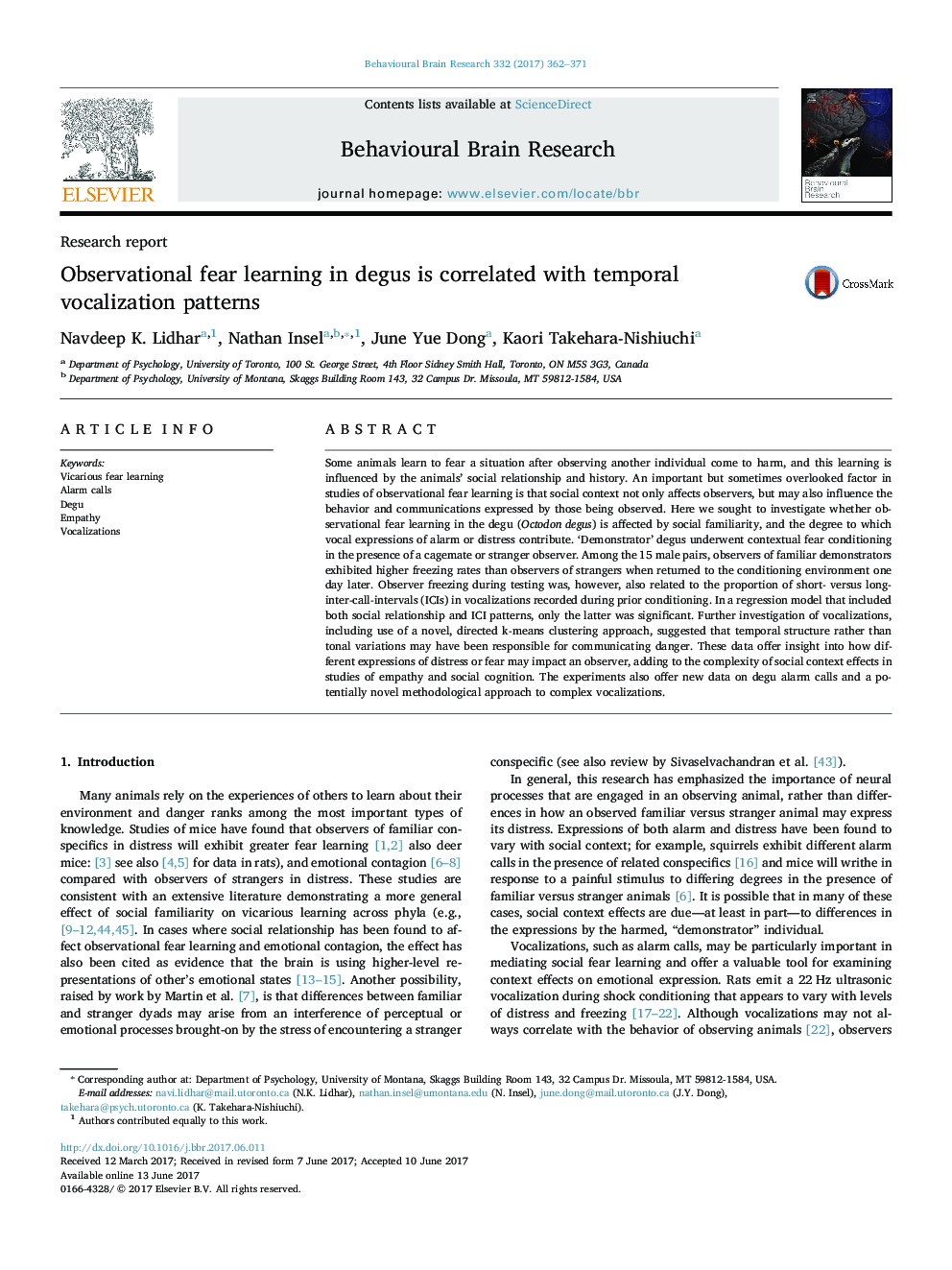| کد مقاله | کد نشریه | سال انتشار | مقاله انگلیسی | نسخه تمام متن |
|---|---|---|---|---|
| 5735133 | 1612903 | 2017 | 10 صفحه PDF | دانلود رایگان |
- Degus form context-fear associations after observing others experience footshocks.
- Observers of distressed cagemates show more fear learning than those of strangers.
- Observer learning correlates with temporal patterns of distress/alarm calls.
- Repeated, k-means clustering reveals differentially expressed syllable types.
- No type of syllable was found to correlate with observer learning.
Some animals learn to fear a situation after observing another individual come to harm, and this learning is influenced by the animals' social relationship and history. An important but sometimes overlooked factor in studies of observational fear learning is that social context not only affects observers, but may also influence the behavior and communications expressed by those being observed. Here we sought to investigate whether observational fear learning in the degu (Octodon degus) is affected by social familiarity, and the degree to which vocal expressions of alarm or distress contribute. 'Demonstrator' degus underwent contextual fear conditioning in the presence of a cagemate or stranger observer. Among the 15 male pairs, observers of familiar demonstrators exhibited higher freezing rates than observers of strangers when returned to the conditioning environment one day later. Observer freezing during testing was, however, also related to the proportion of short- versus long- inter-call-intervals (ICIs) in vocalizations recorded during prior conditioning. In a regression model that included both social relationship and ICI patterns, only the latter was significant. Further investigation of vocalizations, including use of a novel, directed k-means clustering approach, suggested that temporal structure rather than tonal variations may have been responsible for communicating danger. These data offer insight into how different expressions of distress or fear may impact an observer, adding to the complexity of social context effects in studies of empathy and social cognition. The experiments also offer new data on degu alarm calls and a potentially novel methodological approach to complex vocalizations.
Journal: Behavioural Brain Research - Volume 332, 14 August 2017, Pages 362-371
